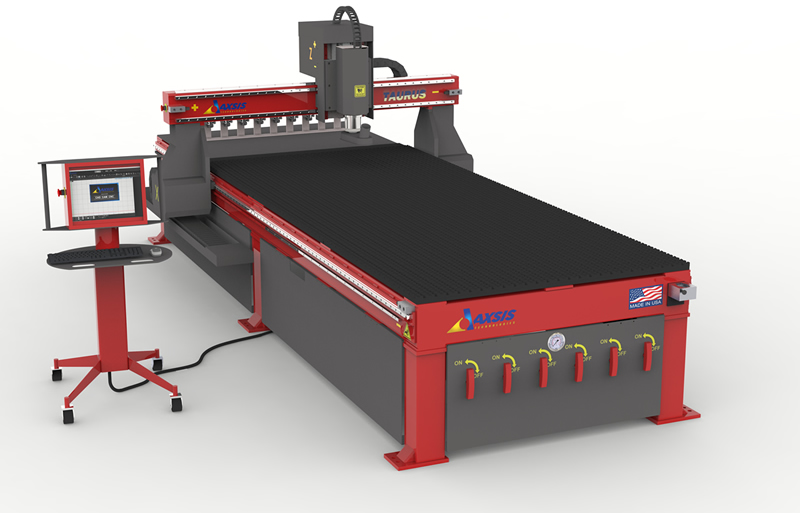
Routers
What is a CNC Router?
CNC routers are cutting machine in which material is removed from a sheet by a rotating tool (spindle). In CNC routing the cutting tool is moved mainly in two dimensions (except for plunging on the Z axis) to achieve the desired part shape. In CNC routing the cutting tool usually rotates about an axis that is perpendicular to the table that holds the material to be cut. A cutting tool hovers over the material from a rotating spindle. A sheet of material is placed on a stationary table below the cutter. While the cutting tool turns, a computer controls the motion of the cutter. The cutter is guided to move through the material, removing portions to create shapes.
HSD Quick Tool Change
Our HSD quick-change air-cooled and liquid-cooled motor spindles are world leaders in the machining of wood, aluminum and plastics. The spindles, are characterized by their extremely high reliability and a wide range of powers and operating speeds available.
Each mechanical, pneumatic and electronic component used in the HSD electro spindles undergoes a double testing phase that guarantees optimum quality standards.
HSD is the leading world company in the production of electrospindles.
There are several benefits of CNC routing.- The process is cost effective for short runs as setup time is minimal.
- Complex shapes and high dimensional tolerances are possible.
- Smooth (taper less) finishes can be achieved.
- CNC routing can produce almost any 2D shape provided inside corners have a reasonable radius.
Examples of parts made by CNC routing include:
sheet metal enclosures, decorative signs, sign lettering, sheet metal mechanisms, etc.
CNC routing can process most rigid materials including:
- Most metals (Aluminum, Stainless Steel, Copper, Steel, Brass, Titanium, Sterling Silver, Bronze, etc.)
- Plus hard plastics and other materials (Nylon, Polycarbonate, Polystyrene, Acrylic, Fiberglass, Carbon fiber, PTFE, ABS, PVC, Wood, etc.)



